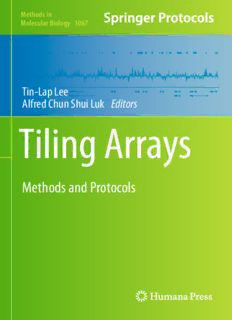
Tiling Arrays: Methods and Protocols PDF
Preview Tiling Arrays: Methods and Protocols
Methods in Molecular Biology 1067 Tin-Lap Lee Alfred Chun Shui Luk Editors Tiling Arrays Methods and Protocols M M B ™ ETHODS IN OLECULAR IOLOGY Series Editor John M. Walker School of Life Sciences University of Hertfordshire Hat fi eld, Hertfordshire, AL10 9AB, UK For further volumes: http://www.springer.com/series/7651 Tiling Arrays Methods and Protocols Edited by Tin-Lap Lee Reproduction, Endocrinology and Development Program, School of Biomedical Sciences, The Chinese University of Hong Kong, Shatin, Hong Kong SAR, China Alfred Chun Shui Luk Reproduction, Endocrinology and Development Program, School of Biomedical Sciences, The Chinese University of Hong Kong, Shatin, Hong Kong SAR, China Editors Tin-Lap Lee Alfred Chun Shui Luk Reproduction, Endocrinology Reproduction, Endocrinology and Development Program and Development Program School of Biomedical Sciences School of Biomedical Sciences The Chinese University of Hong Kong The Chinese University of Hong Kong Shatin, Hong Kong SAR, China Shatin, Hong Kong SAR, China ISSN 1064-3745 ISSN 1940-6029 (electronic) ISBN 978-1-62703-606-1 ISBN 978-1-62703-607-8 (eBook) DOI 10.1007/978-1-62703-607-8 Springer New York Heidelberg Dordrecht London Library of Congress Control Number: 2013946424 © Springer Science+Business Media New York 2 013 This work is subject to copyright. All rights are reserved by the Publisher, whether the whole or part of the material is concerned, specifi cally the rights of translation, reprinting, reuse of illustrations, recitation, broadcasting, reproduction on microfi lms or in any other physical way, and transmission or information storage and retrieval, electronic adaptation, computer software, or by similar or dissimilar methodology now known or hereafter developed. Exempted from this legal reservation are brief excerpts in connection with reviews or scholarly analysis or material supplied specifi cally for the purpose of being entered and executed on a computer system, for exclusive use by the purchaser of the work. Duplication of this publication or parts thereof is permitted only under the provisions of the Copyright Law of the Publisher’s location, in its current version, and permission for use must always be obtained from Springer. Permissions for use may be obtained through RightsLink at the Copyright Clearance Center. Violations are liable to prosecution under the respective Copyright Law. The use of general descriptive names, registered names, trademarks, service marks, etc. in this publication does not imply, even in the absence of a specifi c statement, that such names are exempt from the relevant protective laws and regulations and therefore free for general use. While the advice and information in this book are believed to be true and accurate at the date of publication, neither the authors nor the editors nor the publisher can accept any legal responsibility for any errors or omissions that may be made. The publisher makes no warranty, express or implied, with respect to the material contained herein. Printed on acid-free paper Humana Press is a brand of Springer Springer is part of Springer Science+Business Media (www.springer.com) Pref ace With over 23,000 scientifi c publications, microarray technology represents an indispensible tool in genome discovery and continues to contribute to novel fi ndings along with other high-throughput technologies. The application of microarrays becomes very popular in academic labs as well as in clinics and commercial entities. During the last decade, the design and coverage of microarrays have gone through a drastic development. Conventional microarrays were largely applied to gene expression study. The density was usually low and the probes were limited to known annotations, which led to incomplete and biased conclu- sions. The advent of tiling microarrays not only addressed the weakness of conventional microarrays but also provided a new avenue for other genomic applications. Departing from the biased gene-centric probe design approach, probes on tiling micro- arrays rely purely on genomic DNA sequence information. The probes are evenly distrib- uted across the nonrepetitive portion of the genome. Commercially available tiling array platforms offer fl exible designs with a range of probe lengths and spacing options. According to Gene Expression Omnibus (GEO) at National Center for Biotechnology Information (NCBI), more than 1,100 tiling microarray platforms are now available for various unbi- ased genomic discoveries. Typical tiling microarray applications include transcriptome landscape discovery through mapping of the entire transcribed populations, identifying protein binding and methylated regions by chromatin immunoprecipitation (ChIP-chip) and Methylated DNA immunoprecipitation (MeDIP), and identifying genomic origins of replication. Such versa- tile and robust nature has contributed signifi cantly in decoding the dark matter in the genome, which provides supporting evidence of widespread transcription and regulation events. These include the discovery of novel long noncoding RNAs to the identifi cation of spatiotemporal patterns of gene expression, to the characterization of the transcriptome in various developmental stages and models. Despite high-throughput sequencing methods have recently demonstrated distinct advantages over array-based approaches with regard to data resolution, the “big data” generated requires steep requirements on computer hard- ware and complex bioinformatics analysis. Tiling microarrays could fi ll this gap with many established supporting software. Also, the availability of large tiling array reference datasets in major public repositories like GEO, ArrayExpress, and The Encyclopedia of DNA Elements (ENCODE) will allow rapid and straightforward meta-analysis. This volume focuses on the key applications of tiling microarrays in genomic discovery, including transcriptional regulation, expression, and genetic and epigenetic regulation. Given the applications and types of microarray technology become more numerous and diverse, the limited consensus of how to analyze and interpret the data becomes more apparent. To cope with such challenging issues, the chapters in the data analysis section v vi Preface cover techniques and skills on tiling microarray data analysis that allow readers to leverage the power of dataset from novel perspectives and platform-independent tools. It is our hope that this volume will provide a comprehensive and a down-to-earth approach for maximizing reader’s knowledge on this topic. China, People’s Republic Tin-Lap Lee A lfred Chun Shui Luk Contents Preface .................................................................................................................... v Contributors .................................................................................................................... ix PART I OVERVIEW 1 A Brief Introduction to Tiling Microarrays: Principles, Concepts, and Applications ............................................................................................... 3 Christophe Lemetre and Zhengdong D. Zhang PART II TRANSCRIPTIONAL REGULATION AND EXPRESSION 2 Design of Tiling Arrays and Their Application to Bacterial Transcriptome Analysis .................................................................. 23 Takeshi Akama, Kazuaki Nakamura, Akito Tanoue, and Koichi Suzuki 3 Transcript Profiling in Arabidopsis with Genome Tiling Microarrays ................. 35 Diana Coman, Wilhelm Gruissem, and Lars Hennig 4 Genome-Wide Analysis of Transcription Factor-Binding Sites in Skeletal Muscle Cells Using ChIP-Seq .......................................................... 51 Chung-II An and Nobuko Hagiwara 5 Analysis of Allele-Specific Gene Expression Using a Target-O riented Tiling Microarray Assay .................................................................................... 65 Huiyong Zhang, Xing-Wang Deng, and Lei Li PART III GENETICS AND EPIGENETICS REGULATION 6 Detection of Epigenetic Alterations Using Tiling Arrays ................................... 79 Hoi-Hung Cheung, Owen M. Rennert, and Tin-Lap Lee 7 Investigating Gene Promoter Methylation in a Mouse Model of Status Epilepticus .......................................................................................... 87 Suzanne F.C. Miller-Delaney, Sudipto Das, Raymond L. Stallings, and David C. Henshall PART IV DATA ANALYSIS 8 Integrative Analysis of ChIP-Chip and ChIP-Seq Dataset ................................. 105 Lihua Julie Zhu 9 HAT: A Novel Statistical Approach to Discover Functional Regions in the Genome ................................................................................................. 125 Erdogan Taskesen, Bas Wouters, and Ruud Delwel vii viii Contents 10 Inference of Alternative Splicing from Tiling Array Data ................................... 143 Johannes Eichner 11 Analysis of In Vivo Occupancy of Aebp1, a Transcription Factor, Using High Resolution Tiling Array ................................................................. 165 Swati Sinha, Sainitin Donakonda, and Satyanarayana MR Rao 12 Application of the Simple and Efficient Mpeak Modeling in Binding Peak Identification in ChIP-Chip Studies ........................................ 185 Ming Zheng, Yunmin Li, and Yun-Fai Chris Lau 13 Evaluation of MeDIP-Chip in the Context of Whole-Genome Bisulfite Sequencing (WGBS-Seq) in Arabidopsis ........................................................... 203 René Wardenaar, Haiyin Liu, Vincent Colot, Maria Colomé-Tatché, and Frank Johannes 14 Mapping Genomic Features of Tiling Microarray Data by TileMapper .............. 225 Hoi-Hung Cheung, Janek Claus, Sumeeta Singh, Chandan Sastry, Owen M. Rennert, Wai-Yee Chan, and Tin-Lap Lee Index ............................................................................................................................... 235 Contributors TAKESHI AKAMA • Leprosy Research Center, National Institute of Infectious Diseases , Tokyo , Japan CHUNG-IL AN • Division of Cardiovascular Medicine, Department of Internal Medicine , University of California, Davis , Davis , CA , USA WAI-YEE CHAN • Laboratory of Clinical Genomics, Eunice Kennedy Shriver National Institute of Child Health and Human Development, National Institutes of Health , Bethesda, MD, USA HOI-HUNG CHEUNG • Laboratory of Clinical and Developmental Genomics, Eunice Kennedy Shriver National Institute of Child Health and Human Development, National Institutes of Health , Bethesda, MD , USA JANEK CLAUS • Division of Information Technology , Eunice Kennedy Shriver National Institute of Child Health and Human Development, National Institutes of Health , Bethesda, MD, USA MARIA COLOMÉ-TATCHÉ • Faculty of Mathematics and Natural Sciences, Groningen Bioinformatics Centre, University of Groningen , AG Groningen, The Netherlands VINCENT COLOT • Institut de Biologie de l’Ecole Normale Supérieure, Centre National de la Recherche Scientifi que (CNRS) UMR8197-Institut National de la Santé et de la Recherche Médicale (INSERM) , Paris , France DIANA COMAN • Plant Biotechnology, Department of Biology, ETH Zurich , Zurich, Switzerland SUDIPTO DAS • Cancer Genetics, Department of Molecular and Cellular Therapeutics, Royal College of Surgeons in Ireland, Dublin, Ireland; The National Children’s Research Centre, Our Lady’s Children’s Hospital, Crumlin, Dublin, Ireland RUUD DELWEL • Department of Hematology , Erasmus University Medical Center , Rotterdam , The Netherlands XING-WANG DENG • Department of Molecular, Cellular and Developmental Biology, Yale University , New Haven, CT , USA SAINITIN DONAKONDA • Biotechnologisches Zentrum, Technische Universität , Dresden, Germany JOHANNES EICHNER • Center for Bioinformatics, University of Tuebingen , Tübingen, Germany WILHELM GRUISSEM • Plant Biotechnology, Department of Biology, ETH Zurich , Zurich, Switzerland ; Functional Genomics Center Zurich, ETH Zurich , Zurich , Switzerland NOBUKO HAGIWARA • Division of Cardiovascular Medicine, Department of Internal Medicine, University of California, Davis , Davis , CA , USA LARS HENNIG • Plant Biotechnology, Department of Biology, ETH Zurich , Zurich, Switzerland ; Functional Genomics Center Zurich, ETH Zurich , Zurich , Switzerland ; Department of Plant Biology and Forest Genetics, Uppsala BioCenter, Swedish University of Agricultural Sciences and Linnean Center for Plant Biology , Uppsala , Sweden DAVID C. HENSHALL • Department of Physiology and Medical Physics, The Royal College of Surgeons in Ireland , Dublin, Ireland ix
Description:The list of books you might like

The Silent Patient

The 48 Laws of Power

Atomic Habits James Clear

The Mountain Is You
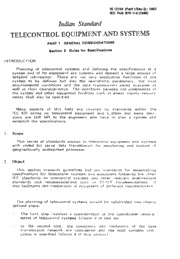
IS 12746-1-2: Telecontrol equipment and systems, Part 1: General considerations, Section 2: Guide for specifications

Union Government, Extraordinary, 2006-01-27, Part II-Section 3-Sub-Section(ii), Ref. 96(E)
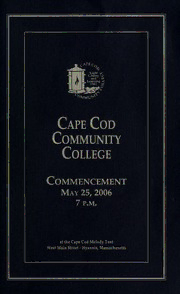
Cape Cod Community College commencement exercises, 1963-

A Mãe by Maksim Gorky

Dodge Durango Car Brochure (2009)

AiKiDô: The Trinity of Conflict Transformation

BC460 SAPscript

Pearson Baccalaureate

ERIC ED389251: Mentoring College Bound High School Seniors.
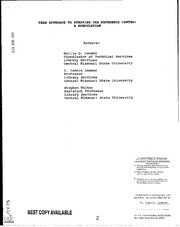
ERIC ED390390: Team Approach to Staffing the Reference Center: A Speculation.
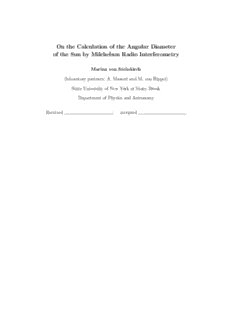
Calculating the Angular Diameter of the Sun - Stony Brook Astronomy

FFA New Horizons

Learn Russian Diversified

Diagnosis and Fault-tolerant Control, Volume 1: Data-driven and Model-based Fault Diagnosis Techniques

Possible origin of 60-K plateau in the YBa2Cu3O(6+y) phase diagram
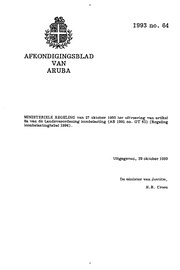
Afkondigingsblad van Aruba 1993 no. 64

Afkondigingsblad van Aruba 1993 no. 62

DTIC ADA459921: A Framework for Learning Declarative Structure


